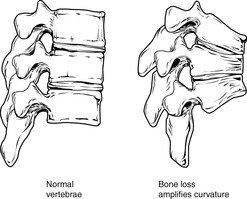THE LINK BETWEEN INFLAMMATION
AND OSTEOPOROSIS
I have written numerous posts on OSTEOPOROSIS, including the fact that simply taking more or “better” calcium supplements is the single worst thing you could possibly do for it (HERE, HERE, and HERE). Rather than rehashing that material, today we are going to discuss the link between whole-body (systemic) Inflammation and Osteoporosis. You see, there have been numerous studies published in the peer-reviewed scientific literature linking Inflammatory blood markers such as C-Reactive Protein, Tumor Necrosis Factor alpha, IL-6, IL-1, and others, with both bone loss and fractures. Truthfully; it’s not like any of this is “news”. Just look at the dates on some of this research.
- A 2007 study from Nutrition Reviews (Osteoporosis and Inflammation) stated that, “Human and animal experiments have implicated pro-inflammatory cytokines as primary mediators of the accelerated bone loss at menopause including interleukin-1, tumor necrosis factor-alpha, and interleukin-6. Increased production of pro-inflammatory cytokines is associated with osteoclastic bone resorption in a number of disease states including rheumatoid arthritis, periodontitis, and multiple myeloma.” RA, Gum Disease, and a type of CANCER — all are considered inflammatory problems, and are being heavily linked to the classic signs of Osteoporosis — bone loss and fractures.
- Speaking of “older” studies on this topic, here’s one for you. Take a look at the abstract from Bone Research Protocols found in a 2003 issue of Methods in Molecular Medicine (Inflammation-Induced Osteoporosis) “Generalized osteoporosis and an increased risk of fracture are commonly observed in chronic inflammatory diseases such as rheumatoid arthritis, ankylosing spondylitis, and inflammatory bowel disease. Current evidence suggests that the osteoporosis developed during chronic inflammation may result from the inhibition of bone formation, and is associated with systemic overproduction of proinflammatory mediators, such as cytokines, nitric oxide (NO), and prostaglandins.” Not much to add to this. If you want to read more about CYTOKINES, just follow the link to see how DEPRESSION is also considered “Inflammatory”.
- Dr. Kamil Barbour, an epidemiologist with the University of Pittsburgh who also works for the CDC, was lead researcher on three different studies on this subject — the latest being published in April’s issue of the Journal of Bone and Mineral Research. All three of these studies showed the link between Inflammation and Osteoporosis, with two of the three showing a 250% greater fracture risk in women with the highest blood levels of inflammatory markers. Dr. Barbour had this to say about his studies, “I know a lot of people will remain skeptical and say inflammation is just a marker for frailty or something else, but in our studies we controlled for frailty, and this did not change our results.” Stick around because another researcher will soon say something almost identical.
- A study published in the May 2008 issue of the Clinical Journal of Endocrinology and Metabolism (Circulating Levels of Inflammatory Markers Predict Change in Bone Mineral Density and Resorption in Older Adults: a Longitudinal Study) concluded that, “Variation within the low levels of inflammatory markers observed in this study, especially IL-6, predicts bone loss and resorption, suggesting that targeted anti-inflammatory therapy has potential for the prevention of osteoporosis“. The problem is that “targeted” anti-inflammatory medications have, for the most part, proved to be a pipe dream. Vioxx was supposed to be a “targeted” therapy (the Cox II enzyme), but affected Cox I and others as well. The results were severe, leading it and others to be pulled off the market (HERE).
- Listen to just one sentence from a 2006 issue of the Journal of the American Medical Association. “Inflammatory cytokines stimulate osteoclastic bone resorption, and inhibit osteoblastic function.” Osteoblasts are the cells that build bone, while osteoclasts break it down. Both are critical because bone is a tissue that is constantly being remodeled (old bone resorbed and new bone being created to take its place). You can see how Inflammation tips that scale towards Osteoporosis. As a side note; the so-called “bone-building” drugs actually cause Osteoporosis by messing with this system (HERE).
- Try this conclusion of a study published in the July 2011 issue of Osteoporosis International on for size. “CRP is a significant predictor of osteoporotic fracture in elderly Asian women who have substantially lower CRP levels than Caucasians.” In other words, Americans have far higher markers of Systemic Inflammation than Asians, who showed a strong link between Inflammation and Osteoporosis. When you consider how inflamed we are as a society, this is scary.
- This year’s January issue of the Journal of Bone and Mineral Research published a study called C-Reactive Protein, Bone Strength, and Nine-Year Fracture Risk: Data From the Study of Women’s Health Across the Nation (SWAN). The study’s abstract stated, “Higher levels of C-reactive protein (CRP), an inflammatory marker, are associated with increased fracture risk.” There it is yet again. Inflammation is intimately related to Osteoporosis.
- A 2009 study from JOE (the Journal of Endocrinology) called Bone Loss in Inflammatory Disorders stated in it’s abstract that, “Chronic inflammatory diseases of almost any cause are associated with bone loss. Bone loss is due to direct effects of inflammation, poor nutrition, reduced lean body mass, immobility and the effects of [medical] treatments, especially glucocorticoids [CORTICOSTEROIDS]. These mechanisms are complex and interrelated but are ultimately mediated through effects on the bone remodelling cycle. Inflammatory disease can increase bone resorption and decrease bone formation but most commonly impacts on both of these processes resulting in an uncoupling of bone formation from resorption in favour of excess resorption.” Excess resorption with diminished formation. Doesn’t sound good as far as bone health, does it? Also in this abstract, Corticosteroids are one of the most powerful anti-inflammatory drugs frequently prescribed today. It is a known cause of Osteoporosis. First they give you drugs that cause Osteoporosis; then give you the drugs that supposedly “cure” it. It’s the perfect set up for making money. They get you coming and going.
- Here is a study from the March 2010 issue of a Brazilian journal called Arquivos Brasileiros de Endocrinologia & Metabologia (Osteoporosis and inflammation). Listen carefully to what they say in the summary. “Several inflammatory diseases such as rheumatoid arthritis, systemic lupus erythematosus, inflammatory bowel disease, celiac disease, cystic fibrosis and chronic obstructive pulmonary disease have been associated to bone resorption. The link between osteoclast, macrophage colony stimulating factor and pro-inflammatory cytokines, especially tumor necrosis factor-α and interleukin-1 explain the association between inflammation and osteoporosis. ” Firstly, check out the list. GLUTEN SENSITIVITY (Celiac Disease). AUTOIMMUNE DISEASES (several on the list fall into this category), SMOKING (COPD), and IBD, are a few of those “Inflammatory” problems associated with bone loss. Here’s the kicker though. Pay attention. “These diseases are related to osteoporosis and high fracture risk independent of other risk factors common to inflammatory diseases such as reduced physical activity, poor nutritional status, hypovitaminosis D, decrease in calcium intake and glucocorticoid treatment…..” In other words, Osteoporosis is associated with the list at the top part of the bullet point (Inflammatory Diseases) regardless of the list at the bottom of the bullet point.
There are other studies I could have dealt with. Lots of others. The bottom line is that if you are in the least bit concerned with developing (or solving) Osteoporosis, you had better be dealing with underlying Inflammation as though your life depends on it — because frankly, it does. Furthermore, the idea that you can take some Calcium pills and a bone-building drug (Boniva, Evista, Fosamax, etc) to reverse this problem is a pipe dream. You have to be dealing with the body as a whole organism (HERE). The really cool thing about this approach is that it is essentially the same approach (with modifications for your particular problems) you should be using for whatever ails you. I find it interesting that even though it is common knowledge that SUGAR rots your teeth, few realize that it does the same thing to your bones (HERE is one of the mechanisms). Maybe we need to do a better job of listening to those dentists of yesteryear, such as ROYAL LEE and WESTON PRICE.



